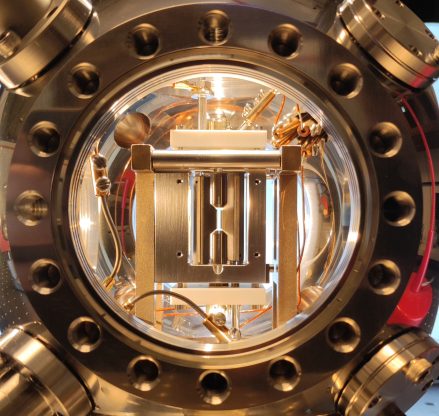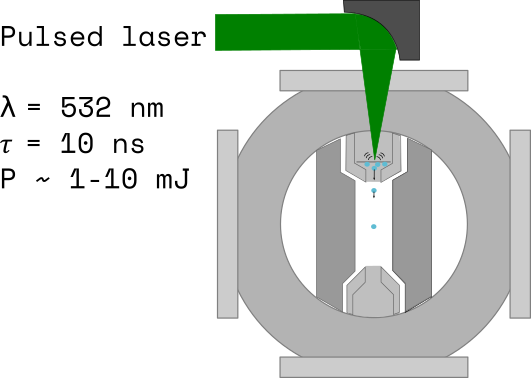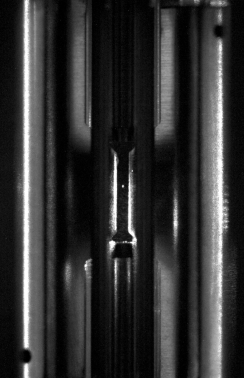The last two decades there have been many advances in the research of nanomechanical oscillators. These systems exhibit high resonance frequencies, high quality factors and low dissipation. In particular, a levitated nanoparticle is a nanomechanical oscillator that has the advantage of not having losses due to the friction of clamping; this allows these systems to have coherences that are long enough to observe quantum effects on macroscopic objects.
We aim at trapping individual NaYF4 nanoparticles doped with Yb3+ in a Paul trap inside an ultra high vacuum environment. There, we will develop methods to cool both their center of mass and internal degrees of freedom with laser and feedback cooling techniques. This system is ideal to study and develop further understanding on the frontier between micro and macroscopic physics, and between atomic and solid state physics. For example, on this system we can study thermodynamic processes at the limit where fluctuations become relevant. Also we envision this will be a versatile platform to perform nano-scaled solid-state experiments at temperatures near absolute zero.
2022 update – We are currently assembling the vacuum system, optics, and the electronics for a Paul electrodynamic trap. Our goals this year include demonstrating our ability to load the trap using Light Induced Acoustic Desorption (LIAD).
2023 update – We successfully built a linear Paul trap within an Ultra High Vacuum (UHV) chamber. Also, we load nanoparticles into the trap using Light Induced Acoustic Desorption (LIAD) through the hollow upper endcap. As we load through the endcap, we now have a clear window in the UHV chamber for directing laser light onto the levitated nanoparticle, as well as two other windows available for performing measurements: one for the internal degrees of freedom and another for the external ones.



Buenos Aires, Argentina.
2024 update – Currently, we are systematically trapping individual Er3+Yb3+:NaYF4 nanoparticles in a low vacuum environment. Our laboratory work is focused on two main areas. Firstly, we are able to measure the center of mass motion of the trapped nanoparticle. Our goal for this year in this direction is to implement electric feedback cooling to precisely confine the nanoparticle’s center of mass within a small spatial volume.
Secondly, we are conducting spectroscopic experiments on these embedded nanocrystals. We characterized the emission of Er3+Yb3+:NaYF4 nanoparticle clusters relative to their temperature to be able to monitor the internal temperature of the levitated nanoparticles throughout our experiments.
On the theoretical front, we are developing innovative methods to improve the cooling of Yb3+:NaYF4 nanocrystals. Our efforts include constructing a quantum mechanical model to validate concepts that we plan to implement in our setup for levitated nanoparticles in vacuum environment.
